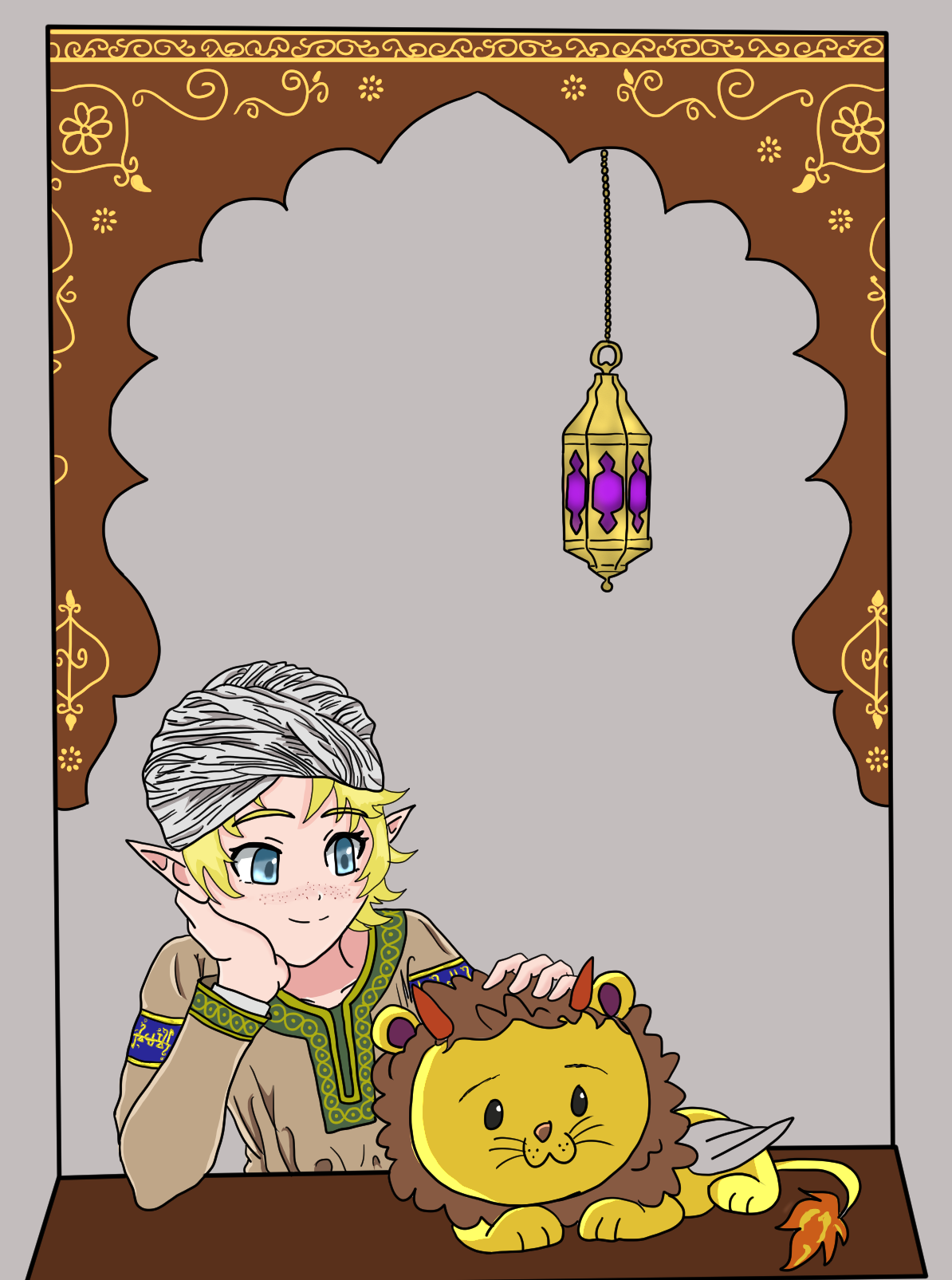Lovers Star
The Lover's Star, also known as the Star of Arjuna or the Star of Sita due to the mythical love story between these characters recorded in the Aranpana or "Book of the Kings" in Elvish, was a celestial phenomenon that happened in an unspecified date before 4000 BP.
Mythical story
According to elven mythology, When prince Arjuna and princess Sita fell in love when each looked at the other's reflection in the water and both decided to leave their homes to search for one another, as their kingdoms were surrounded by dense forests they didn't know which direction they should take, so, the Goddess of Nature asked his husband, the Sun god, to create a star for the lovers that could be seen during the day and at night that would guide to a place where they could finally meet. The myth also tells us how the servants of the god of darkness and death tried to cover the sky with thick clouds but these were diverted by the goddess of Thunder and the god of wind, following the orders of the Sun God.

Aside of the various perils and dangers Arjuna and Sita had to overcome, the star continued to guide the two main protagonists until they finally met. It is also said in the myth, that the star could still be seen a couple of months later when the wedding took place in the same spot where the two lovers met and after that event, some versions said it faded away gradually while other versions don't make references to the star after the wedding at all.
Possible explanation
This phenomenon was represented in paintings, carvings and temple murals across the elven world. The first representation of the star guiding both characters appears in the Sun Elf First Dynasty (ca.7000 BP) at the temple of Dayr El Khatyn, but it is very plausible that representations like these already existed in other parts of the Elven world. The star symbolized the Gods mercy and love for the elven race as well as a symbol of faith in them.
For thousands of years astronomers and scholars have tried to identify what kind of phenomena was the one that helped both the famous princess and the prince to reach their goal of meeting one another. The post likely hypothesis is that the Lovers Star was a supernova, but no written record of it survives (if writing was already invented when it happened). The first rational explanation of the supernova dates from 2300 BP from a papyrus preserved at the Royal Palace of Ymhilean that says:
(...) It is the consensus among scholars, astronomers and priests that such event was indeed produced by the Sun god itself, but we say at the same time, that was most likely happened is that the Lord of Wisdom of Light decided to end the life of an star (such events have been recorded since then and seem to coincide with what happened in the story) with a big and bright explosion that could be seen in the sky both during the day and during the night. This does not in any way tries to disrespect the Sun God, the most merciful, the wisest, but it serves as a testimony to the power of our Celestial Father and the gods in general. (...)
A couple of centuries later, perhaps influenced by the mythical tails and by the astronomical treatises from the Kingdom of the Sun elves, the Astronomical Treatise of King Shuluma II of Ashawi (located in what is today North-Western Karia) written on a clay tablet listed some supernova events, the latest being a couple of decades before his reign. One of such events is the so-called Star of the Elves (Kakkabu Gastûgi in their native tongue) that corresponds with the Star that guided Arjuna and Sita. So, this indicates that the star of the myth was identified by the Ashawians as a Supernova, just as the other ones they had recorded.
Legacy
Some believe that the eight-pointed star, common symbol among the Davidovian peoples and the elves associated with the Sun God might actually represent the Lovers Star, but the symbol may have existed previously to the supposed data when Arjuna and Sita lived.






Yaaay, a myth! I love the artwork you've done for this.
Explore Etrea